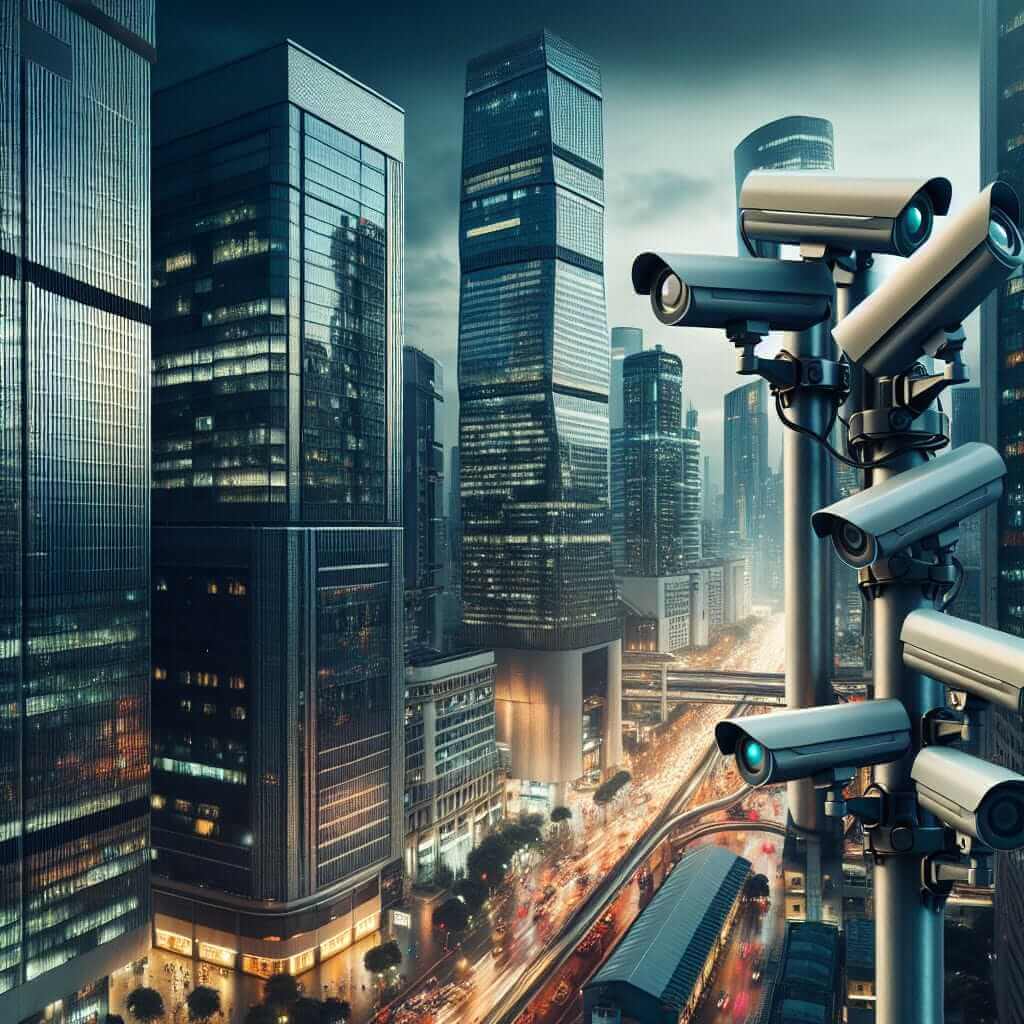The IELTS Reading section is a critical part of the IELTS exam, demanding a high level of comprehension and analytical skills. One of the recurring themes in the IELTS Reading section is technology and its impacts. Given the increasing global focus on privacy and security, the topic “What are the social impacts of increasing use of surveillance technology?” has become particularly relevant and frequently appears in various contexts. This article aims to provide an in-depth practice exercise based on this theme while optimizing for search engines using relevant keywords and LSI (Latent Semantic Indexing) keywords.
Surveillance technology, including CCTV cameras, facial recognition systems, and internet monitoring tools, impacts societies in numerous ways, touching on aspects of privacy, security, ethics, and social behavior. Given the timeliness and relevance of this topic, it’s likely to appear in future IELTS Reading sections.
Practice Reading Passage
Reading Passage
The Social Impacts of Increasing Use of Surveillance Technology
Surveillance technology has seen exponential growth in recent years, deeply embedding itself into the fabric of modern societies. From public spaces to personal devices, surveillance tools now permeate nearly every aspect of daily life. While these technologies promise enhanced security and efficiency, they also provoke a myriad of social, ethical, and legal concerns.
The Promise of Safety and Security
A primary justification for the deployment of surveillance technology is its potential to bolster public safety. CCTV cameras and facial recognition systems in urban areas aim to deter criminal activities and expedite law enforcement responses. Internet monitoring helps identify and mitigate cyber threats, from hacking attacks to the spread of extremist content. However, the effectiveness of these measures has come under scrutiny. Critics argue that the sense of security provided is often an illusion, as determined criminals frequently find ways to circumvent these technologies.
Privacy Concerns and Ethical Dilemmas
The omnipresence of surveillance technology raises significant privacy issues. Individuals are constantly monitored, with their activities recorded and analyzed, often without explicit consent. This pervasive scrutiny feeds into a broader debate about the right to privacy versus the need for security. Ethically, the deployment of surveillance technologies often lacks transparency, raising concerns about who is surveilling whom and to what end. The potential for misuse by authorities or third parties further complicates this ethical landscape.
Impact on Social Behavior and Trust
Constant surveillance alters social dynamics, influencing how individuals behave in public and private spaces. Knowing they are being watched, people may self-censor, avoid certain behaviors, or feel a general sense of unease. This can erode trust within communities, as individuals become wary not only of authorities but also of each other. The implications for social cohesion are profound, potentially leading to more fragmented and distrustful societies.
Legal Implications and Regulatory Challenges
The rapid advancement of surveillance technology often outpaces existing legal frameworks designed to protect civil liberties. Countries around the world struggle to balance technological capabilities with individuals’ rights to privacy and freedom. Crafting effective regulations is complicated by the global nature of digital communications and the differing views on privacy across cultures. Ensuring accountability and transparency in the use of surveillance technology remains a key legal and regulatory challenge.

Questions
Multiple Choice
-
What is a primary justification for the deployment of surveillance technology?
- A) To reduce operational costs
- B) To enhance public safety
- C) To facilitate social interactions
- D) To increase technological development
-
Critics argue that the sense of security provided by surveillance technology is often what?
- A) Overestimated
- B) Adequate
- C) An illusion
- D) Non-existent
True/False/Not Given
-
Surveillance technology includes CCTV cameras and facial recognition systems.
-
Limitations of surveillance technology are never addressed in ethical debates.
-
Public surveillance can influence social behavior.
Matching Headings
6-8. Match each paragraph with the correct heading from the list:
- i) Privacy Concerns and Ethical Dilemmas
- ii) The Promise of Safety and Security
- iii) Legal Implications and Regulatory Challenges
- iv) Impact on Social Behavior and Trust
- Paragraph 2
- Paragraph 4
- Paragraph 3
Answer Key
- B) To enhance public safety
- C) An illusion
- True
- Not Given
- True
- ii) The Promise of Safety and Security
- iii) Legal Implications and Regulatory Challenges
- iv) Impact on Social Behavior and Trust
Common Mistakes
While practicing, many candidates struggle with:
- Identifying the main idea of each paragraph, leading to incorrect matching headings.
- Misinterpreting factual information in True/False/Not Given questions.
- Overlooking key details and answer choices in the multiple-choice questions.
Vocabulary
- Exponential (adj) /ˌɛks.poʊˈnen.ʃəl/: Increasing rapidly.
- Permeate (verb) /ˈpɜr.miˌeɪt/: To spread through something.
- Mitigate (verb) /ˈmɪt.əˌgeɪt/: To make less severe.
- Omnipresence (noun) /ˌɑːm.nɪˈprɛz.əns/: The state of being widespread or constantly encountered.
Grammar
- Present Perfect Tense: Used to indicate actions that have occurred at an unspecified time before now.
- Example: “Surveillance technology has seen exponential growth in recent years.”
- Passive Voice: Often used when the focus is on the action rather than the doer of the action.
- Example: “Individuals are constantly monitored, with their activities recorded and analyzed.”
Advice for High Scores in IELTS Reading
- Practice Regularly: Consistent practice helps familiarize yourself with question formats and improve reading speed.
- Expand Vocabulary: A broader vocabulary aids in understanding complex texts and inferring the meaning of unknown words.
- Skim and Scan: Develop techniques to quickly locate information and grasp the main ideas.
- Analyze Errors: Review your mistakes to understand where you went wrong and learn from them.
By understanding the impacts of surveillance technology and practicing this reading passage, you’ll be better prepared for the IELTS Reading section and equipped with the skills to handle a wide range of topics.